 |
 |
 |
| |
ANTEPARTUM WEIGHT GAIN AND ADVERSE PREGNANCY OUTCOMES IN IMPAACT 2010
|
| |
| |
CROI 2021 March 6-10 reported by Jules Levin
Risa M . Hoffman1, Lauren Ziemba2, Sean Brummel2, Lameck Chinula3, Teacler
G. Nematadzira4, Frances Nakayiwa5, Jeff Stringer6, Chelsea Krotje7, Patrick Jean-Philippe8, Anne Coletti9, Rebecca Zash10, Roger Shapiro10, Paul Sax11, Judith S. Currier1, Shahin Lockman11
1University of California Los Angeles, Los Angeles, CA, USA, 2Harvard TH Chan School of Public Health, Boston, MA, USA, 3University of North Carolina Project–Malawi, Lilongwe, Malawi, 4University of Zimbabwe, Harare, Zimbabwe, 5Makerere University–Johns Hopkins University Research Collaboration, Kampala, Uganda, 6University of North Carolina at Chapel Hill, Chapel Hill, NC, USA, 7Frontier Science Ltd., Inverness-shire, UK, 8National Institute of Allergy and Infectious Diseases, Rockville, MD, USA, 9FHI 360, Durham, NC, USA, 10Beth Israel Deaconess Medical Center, Boston, MA, USA, 11Brigham and Women's Hospital, Boston, MA, USA
Background: Insufficient and excess weight gain during pregnancy have been associated with adverse pregnancy outcomes. We evaluated the association between antepartum weight gain and adverse pregnancy outcomes in secondary analyses of IMPAACT 2010 data.
Methods: Women with HIV-1 in 9 countries were randomized 1:1:1 at 14-28 weeks gestational age (GA) to start dolutegravir (DTG)+emtricitabine(FTC)/ tenofovir alafenamide fumarate (TAF) vs. DTG+FTC/tenofovir disoproxil fumarate(TDF) vs. efavirenz (EFV)/FTC/TDF. By-arm differences in average antepartum weekly weight gain were estimated using generalized estimating equations. Low weight gain was defined as <0.18 kg/week and high weight gain as >0.59 kg/week (Institute of Medicine). Time to event analyses were used to estimate risk of the composite adverse pregnancy outcome of stillbirth (≥20 wks GA), preterm delivery (<37 wks GA) and small for gestational age (SGA: <10th percentile), as well as each of these individual outcomes and neonatal death, using Cox-proportional hazards regression models with weight gain as a time-varying covariate.
Results: 643 participants were randomized: 217 in DTG+FTC/TAF, 215 in DTG+FTC/TDF, and 211 in EFV/FTC/TDF arms. Baseline medians were: GA 21.9 weeks, HIV RNA 903 cp/mL, CD4 count 466 cells/uL. The rate of adverse pregnancy outcome was lowest with DTG+FTC/TAF. Weekly average weight gain was highest with DTG+FTC/TAF (0.378kg) compared to DTG+FTC/TDF (0.319kg, p=0.011) and EFV/FTC/TDF (0.291kg, p<0.001). Low weight gain was least common with DTG+FTC/TAF (15.0%) compared with DTG+FTC/TDF (23.6%) or EFV/FTC/TDF (30.0%), with the opposite pattern for high weight gain: DTG+FTC/ TAF (12.7%) vs. DTG+FTC/TDF (9.9%) vs. EFV/FTC/TDF (6.3%). Overall, low weight gain was associated with higher risk of any adverse pregnancy outcome (HR 1.4, 95%CI 1.02,1.96) and of SGA (HR 1.5, 95% CI 0.99,2.22). For women in the DTG+FTC/TAF arm, low weight gain was also associated with higher risk of stillbirth (HR 6.2, 95%CI 1.16,32.81) and preterm delivery (HR 3.7, 95%CI 1.14,11.92) compared with normal weight gain. There were no associations between high weight gain and adverse pregnancy outcomes or low or high weight gain and neonatal death.
Conclusion: Low (but not high) weight gain was associated with adverse pregnancy outcomes. Women starting DTG+FTC/TAF in pregnancy gained more weight antepartum than women starting DTG+FTC/TDF or EFV/FTC/TDF, while women starting EFV/FTC/TDF had the lowest weight gain.
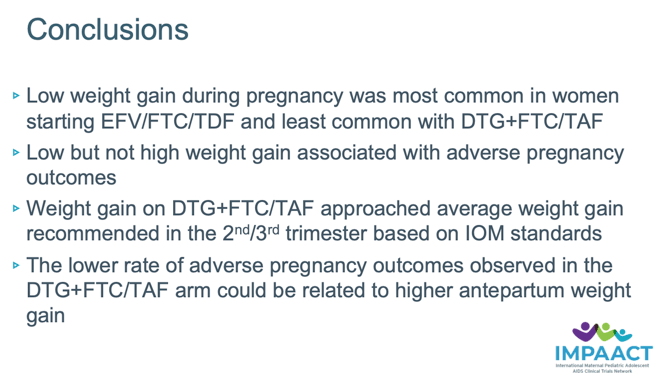
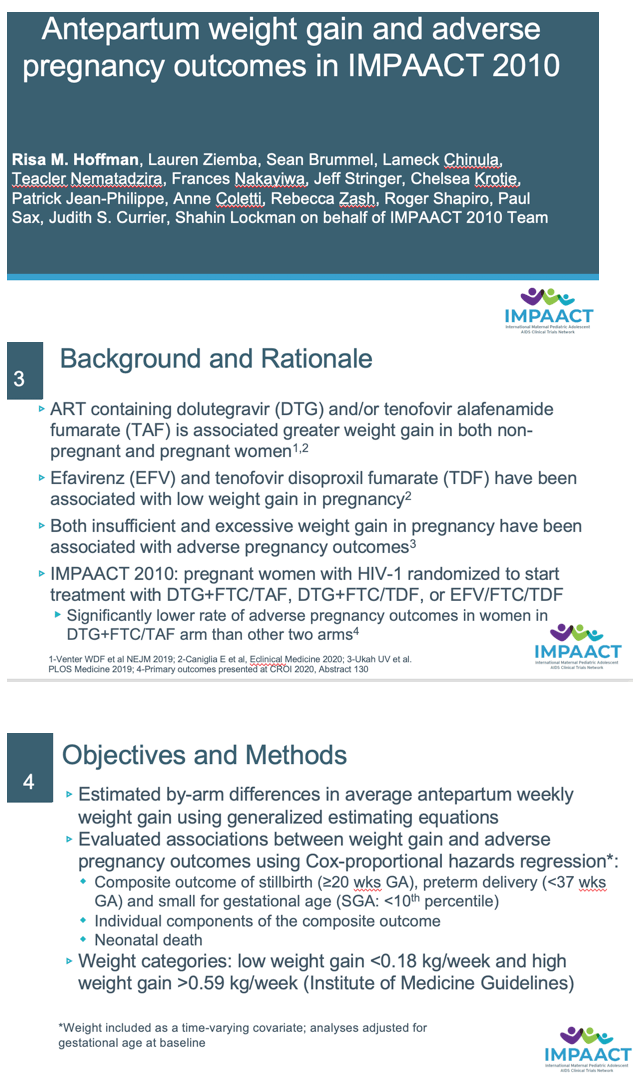
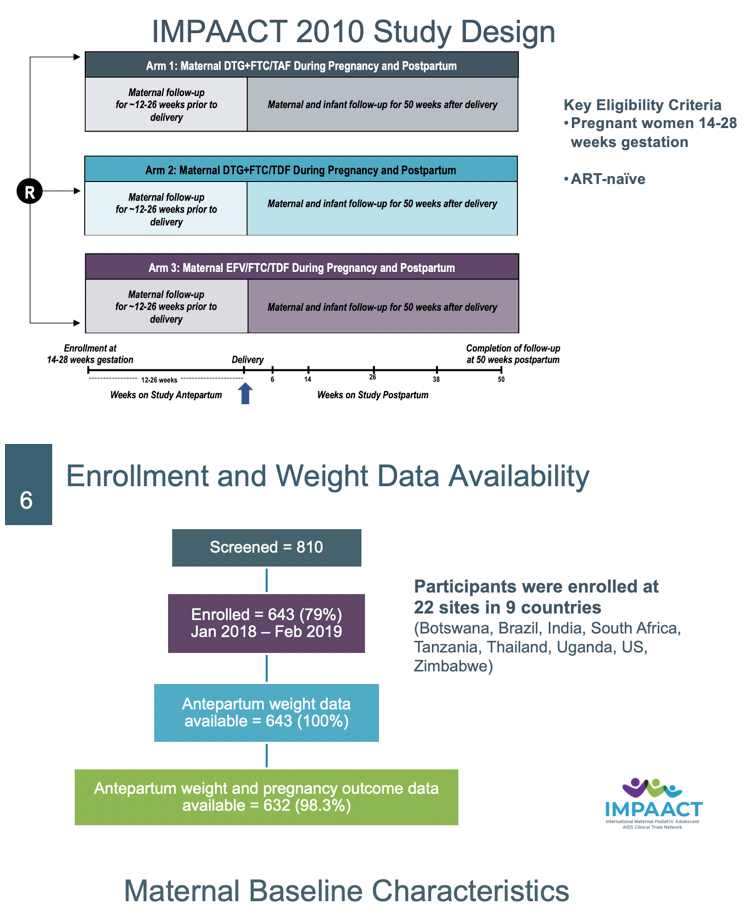
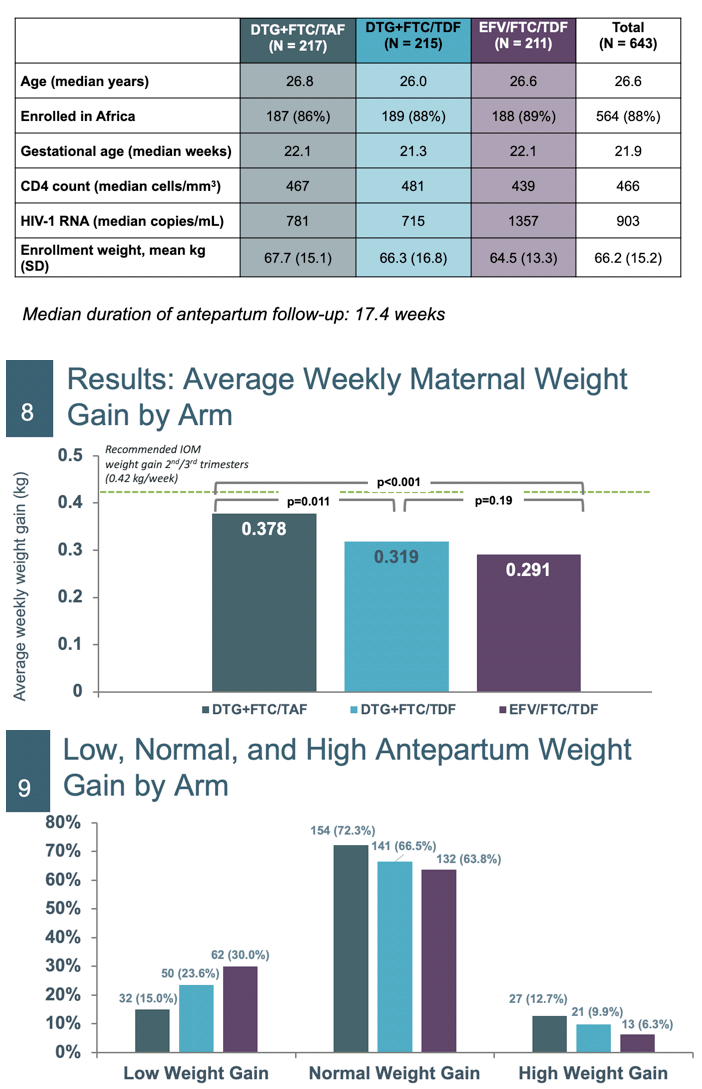
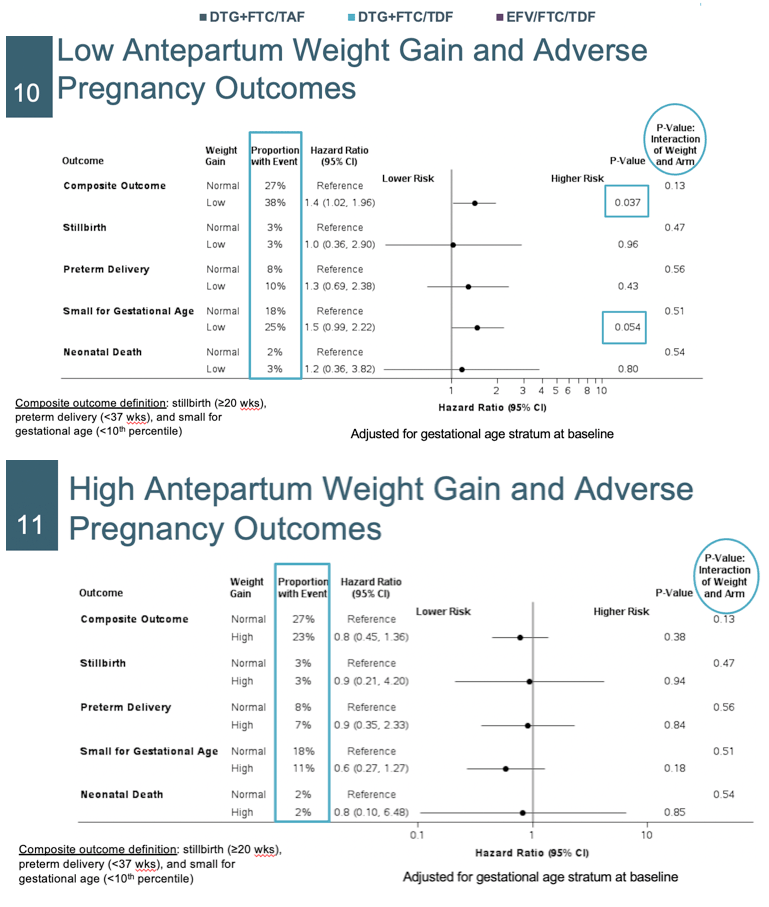
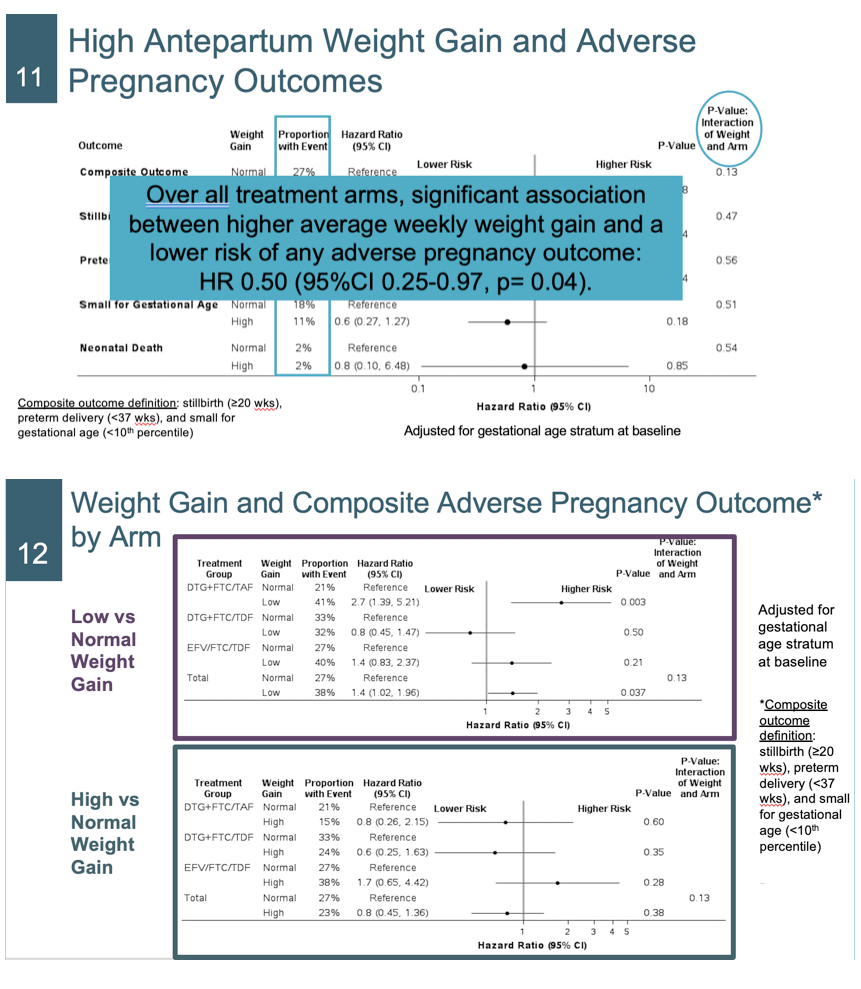
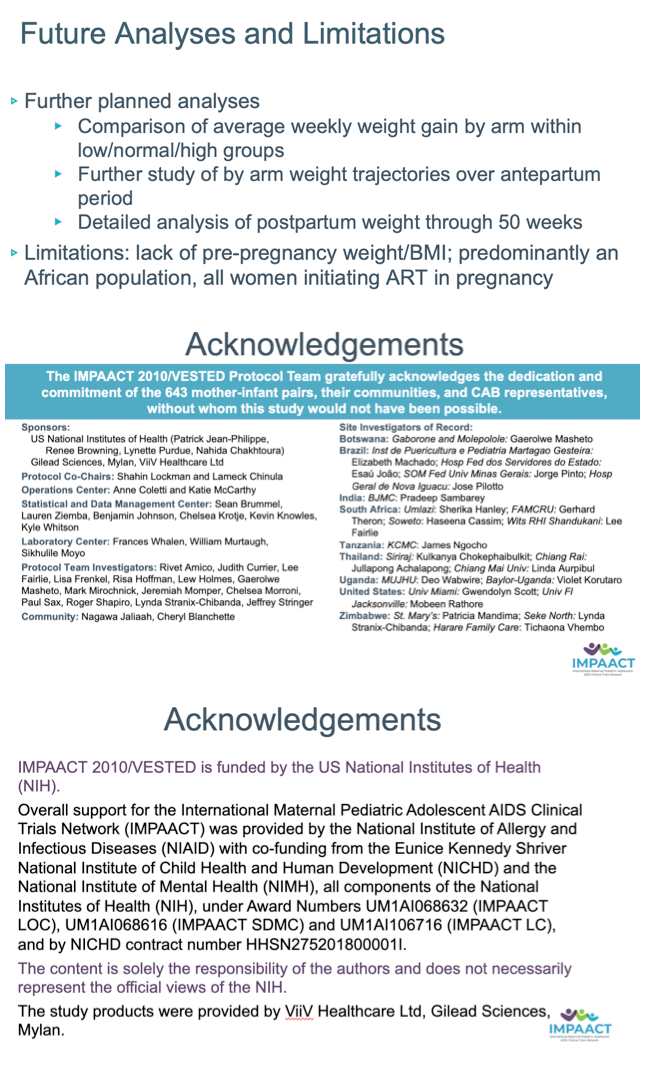
|
| |
|
 |
 |
|
|